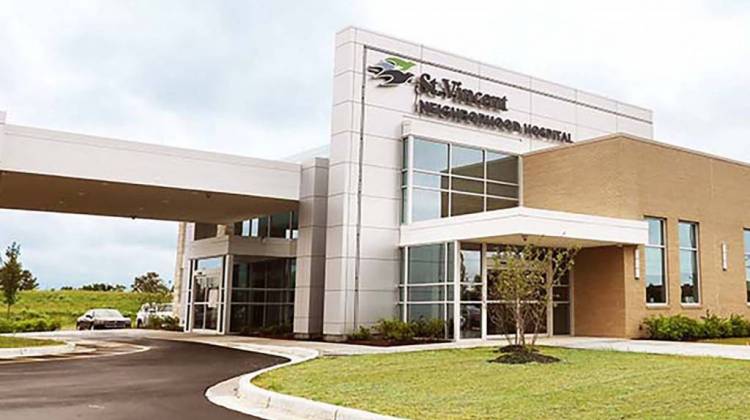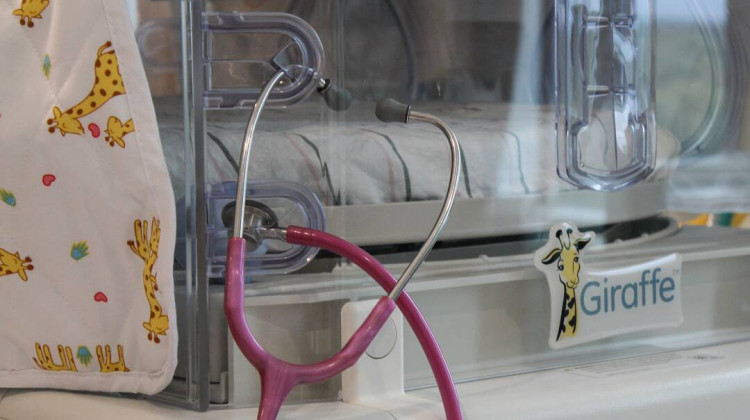
In an effort to respond to patients’ desires for speed and convenience, health networks are thinking small.
Courtesy St. Vincent Neighborhood HospitalIn an effort to respond to patients’ desires for speed and convenience, health networks are thinking small.
Microhospitals — which typically offer limited procedures and acute care services in a building with a significantly smaller footprint than traditional hospitals — have proven popular in other states, and a handful of the facilities are planned to open in Indiana.
While there isn’t a standard definition for a microhospital, most resemble a cross between a small hospital found in rural settings and an urgent care clinic and have around a dozen beds for short-term patient stays.
St. Vincent Health, which operates 20 hospitals in 57 Indiana counties, is one of the systems trying a smaller location on for size. Last month, it opened its first microhospital in Noblesville. Representatives are calling it a “neighborhood hospital.”
Richard Fogel, St. Vincent Health’s chief clinical officer, says the goal is to scale health care to fit what people want and need.
“Patients are really at their most vulnerable when they’re in the ER, and we want that experience to be as good as possible. We’ve designed these to be smaller and more nimble,” he says.
Fogel says he was speaking to a group of about 50 people and he asked who had been in an emergency room themselves or with a loved one in the past three to four years. Almost everyone raised their hands.
“And then I said ‘Alright, raise your hands if you had a great experience,’ and the number of hands that went up was very few,” Fogel says.
Fogel says he hopes the new location can be different.
“We’re not going to make you wait very long,” says Fogel. “We’ve made a door to doc promise of 15 minutes.”
The facility looks a lot like its larger siblings, but on a smaller scale: Seven ER beds, eight inpatient beds and a centrally-located nursing station.
This small, patient-centered model also performs many of the same services that traditional hospitals do including scans, labs and pharmacy.
Indiana Hospital Association president Brian Tabor says the move towards accessibility and convenience is a trend.
“Health care is rapidly changing, and I think hospitals and health systems are always looking at how they can put care closer to the patient and create more continuity in care,” Tabor says.
And it’s not just about tiny hospitals.
“We’re seeing more aggressive strategies when it comes to urgent care centers and outpatient services,” says Tabor. “More generally the microhospital is just one variation on services that are out there, particularly in these rapidly growing areas.”
Microhospitals have seen great success in quickly-growing parts of Colorado and Arizona. The ones planned in Indiana are in booming suburban communities.
Unlike many states, Indiana doesn’t require hospitals to obtain a certificate of need, a market analysis to determine that a community can support another hospital without causing price inflation. This makes it easier to set up these fully-licensed hospitals.
Franciscan Health, another Indiana-based provider, plans to move in this direction. Its new small-scale hospital will be located south of its main hospital in Greenwood and is set to open next year. President and CEO Jim Callaghan says Franciscan spent a lot of time studying the needs of the patients in its area.
“We know the health landscape shows the population is aging, there are more people hitting age 65 every day, so we have to think about this access and convenience,” says Callaghan.
Some also view the small-scale model as a possible solution for rural areas where larger hospitals struggle and patients have a hard time accessing care. Tabor says microhospitals could fill a void in rural parts of the state.
“It’s incredibly important in the long run though for access in rural areas, to have that hospital, to have that building there in a community when you have something occur,” he says.
But for now, St. Vincent’s Dr. Fogel says that’s not a guarantee.
“We’re looking at an opportunity to place these in some rural areas, whether it works or not we’ll have to figure out how to make the model work as it develops,” Fogel says.
St. Vincent has three more neighborhood hopsitals or microhospitals planned in the next year, all in central Indiana.
This story was produced in collaboration between Side Effects Public Media and Indiana Public Broadcasting.
 DONATE
DONATE







 Support WFYI. We can't do it without you.
Support WFYI. We can't do it without you.